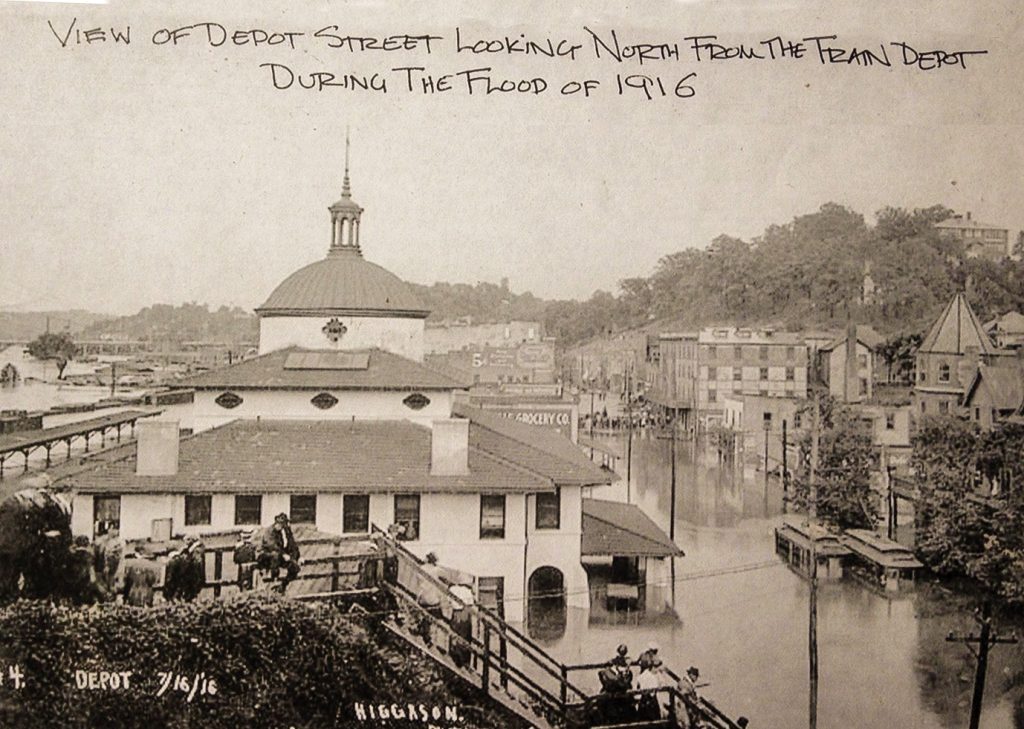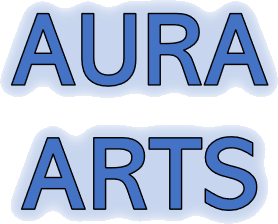
A Legacy of Creativity & Resilience: The History of the River Arts District
The River Arts District (RAD) in Asheville has long been a renowned artistic hub, home to over 700 artists working across a variety of mediums. Situated along the historic French Broad River, one of the oldest rivers in the world, and surrounded by the ancient Blue Ridge Mountains, the district’s rich history intertwines with industry, culture, and artistic innovation.
However, the RAD is now facing a new chapter of resilience and recovery. In 2024, Hurricane Helene caused historic flooding, significantly impacting the district’s artists and businesses. Today, the RAD community is rebuilding—demonstrating the same spirit of creativity and reinvention that has defined its history for centuries.
Before the Artists: The Foundations of the River Arts District
The French Broad River
- 320-340 million years old, one of the three oldest rivers in the United States and one of the five oldest in the world.
- Defines the western boundary of the River Arts District, shaping its early industrial development and present-day identity.
Cherokee Heritage
- The area has been inhabited for over 10,000 years by the Cherokee Nation and was integral to their livelihood, trade, and spiritual practices.
- Known to the Cherokee as “Tahkeyostee” (racing place).
- The Trail of Tears (1838) forcibly removed the Cherokee from their lands. Their descendants now remain as the Eastern Band of Cherokee Indians, living on a small fraction of their ancestral homeland.
Early Settlement & Industrialization
- 1600s-1700s: English, Scotch-Irish, and German settlers arrive.
- Settlers primarily had small family farms, although some larger farms did enslave African Americans.
- Post-Civil War: Railroad expansion, built largely by African American convict labor, leads to industrialization.
- Bond funds were raised to extend the railroad from Morganton across Blue Ridge mountains into Asheville.
- To ensure an adequate workforce, people were easily convicted of laws such as theft of any farm animal over $1 or the crime of not being employed.
- The river and railroads create an industrial hub, attracting tanneries, stockyards, cotton mills, and factories.
The Industrial Era: A Booming District
The Railroad
Key Industries in the RAD
- Tanneries & Leather Production – Hans Rees & Sons tannery processed 30,000 pounds of cattle hides daily and operated out of 30 buildings.
- Textiles & Cotton Mills – Asheville Cotton Mills produced denim and flannel.
- Meat Processing Plants & Stockyards – Vital for regional food supply.
- Furniture & Shoe Factories, Icehouses & Warehouses – The district thrived as a manufacturing powerhouse.
The 1916 Flood: The First Devastation
- The Great Flood of 1916 destroyed many industries, forcing businesses to relocate to higher ground.
- Some new industries, such as the Earle-Chesterfield hatchery and Farmer’s Federation egg processing plant, emerged further uphill.
Urban Renewal & Displacement (1960s-70s)
- Urban renewal programs led to the closure of Black-owned businesses and the displacement of entire communities in the RAD and surrounding areas.
- The East Riverside area, which includes the River Arts District, lost over 1,000 homes, seven churches, and more than 60 Black-owned businesses.
- This included: grocery stores, laundromats, beauty parlors, barber shops, funeral homes, cabinet shops, gas stations, a hotel, a hospital, and doctor’s offices — were condemned or demolished.
- The egg processing plant was later bought by Matthew Bacoate, Jr., who operated MB disposables, creating disposable textiles, such as gowns and masks used in health care. It was the largest black-owned business in Asheville, however it was closed in the 1970’s due to redevelopment policies.
The Birth of the Arts Community (1980s-2000s)
- 1985: Artists begin moving into RAD’s abandoned industrial buildings, transforming them into studios and workspaces.
- 1994: The first “Studio Stroll” is hosted by the Odyssey Center, attracting visitors to the industrial area.
- Highwater Clays funded and organized these strolls for four years before handing over to the artist committee, River District Artists.
- 2005: Following advocacy from artists and building owners, the mile-long section along the French Broad Riverfront is officially named the River Arts District.
- 2013: RAD artists formally organize as River Arts District Artists, Inc. (RADA), a nonprofit with now over 700 members, dedicated to artist advocacy and community engagement.
The 2024 Disaster: Hurricane Helene & RAD’s Ongoing Recovery
- In September 2024, Hurricane Helene caused devastating floods across the River Arts District, severely damaging artist studios, galleries, and small businesses.
- Most working artist studios were lost, and many small arts businesses continue to struggle with paying rent, staff, and operational expenses.
- The disaster has paralleled the historic flood of 1916, forcing the community to once again re-imagine and rebuild.
The RAD Comeback: A Community United in Recovery
- The Upper RAD is now open and is helping displaced artists sustain their work.
- In January of 2024 the RADA Outpost was established in Downtown Asheville.
- Efforts are underway to support Lower RAD artists and reopening spaces.
- A major focus is on securing financial support for artists, rebuilding studios, installing wayfinding signage, and revitalizing the district for visitors.
- Through fundraising efforts and collaborations, RAD is determined to emerge stronger than ever.
Historical Map by Zones
Blue Zone: The Tannery
- 1898: Hans Rees & Sons built 30 buildings on 22 acres for tanning leather belts, processing 30,000 pounds of cattle hide daily.
- 1990: Helaine Green and Trudy Gould rented space in a tannery building (built in 1902), later purchasing it in 1996 for their business Candle Station.
- 2004: Candle Station was closed and the building was renamed Riverview Station, and they created over 100 studios for artists.
- Present: The area between Riverview Station and the railroad tracks is now called “The Foundation,” with Foundy Street connecting workspaces and studios for artists at Foundation Woodworks, Foundation Studios, Marquee, restaurants, a brewery, a movie theater, and a skate park.
Orange Zone: Utilities
- 1901: Warehouse Studios building is built by Williams Feed Company.
- 1916: Curve Studios and Garden was built as a Standard Oil Company distribution center.
- 1987: Warehouse Studios is purchased by Porge & Lewis Buck and officially renamed Warehouse Studios.
- 1989: Artist Pattiy Torno bought the buildings, initially opening a punk rock club (Squash Pile) ,and later transforming the spaces into live/work studios for artists.
- 2004: After Hurricane Francis, the spaces were altered into retail/work spaces featuring Pattiy’s clothing designs, multiple artists, and Silver River Chairs & museum upstairs.
- 1992: Warehouse Studios is acquired by RiverLink for offices and artist studios.
- 8 River Arts Place: Originally an electric company building over Bacoate Creek, which was restored by the City of Asheville. Now the space is leased by Black Wall Street Asheville, a non-profit organizing working to help start, grow, and support black-owned businesses.
Green Zone: The Cotton Mill & Village
- 1887: The Cotton Mill was built by C.E. Graham, who owed multiple buildings in the area, for producing denim and flannel. The mill was bought later by Moses and Cesar Cone, who sold quality to denim to companies such as Levi’s.
- 1905: Mills and Silos in the area of The Hatchery date back to at least this time.
- 1891: Riverside Studios appears on a 1891 map as a general store.
- 1940: The former Riverside Studios building is replace by a new building.
- 1953: The Cotton Mill is closed.
- 1955: A fire destroys most of the Cotton Mill, and The Hatchery was build as part of the Earle-Chesterfield Mill Company.
- 1958: 99 Riverside is built as a storage warehouse.
- 2003: Marty & Eileen Black buys the Cotton Mill building for their ceramics business, opening it to other artists. It is now owned by Jannette Montenegro & Rich Patino, housing Guitar Bar, an art bar, and other art businesses.
- 2004: Riverside Studios is restored after the big flood of 200 by sculptor Jim Richbourg as artist and sculpture studios.
- “Chicken Hill”: The cotton mills required a large workforce, who settled in the area earning the nickname “Chicken Hill.” The name came from the families of those working in the mills brought their small farm animals with them when they came to Asheville.
- 2011: The Hatchery is repurposed for artists and a restaurant.
- Today: All that remains of 99 Riverside today is an old smokestack. This vestiges of an ice house offered cold storage, and sold ice from Mount Mitchell.
Red Zone: Eggs & Groceries
- 1916: The Wedge is built as the Farmer’s Federated Agricultural Co-op, and was later became MB disposables.
- 1920: The Phil Mechanic Building is built as a cold storage warehouse.
- 1923: The Kent Building at 95 Roberts Street is built as the Kent & Ebbs grocery distributorship.
- 1980s: The Wedge building became available after urban renewal, purchased by Bill Goacher, and sold to sculptor John Payne, a mentor to many artists. His large steel works are still visible as the fence and stairway to the lower level and the dinosaur sculpture hanging from the building above Bottle Riot.
- 1995: Odyssey Center for Ceramic Arts was purchased by Brian & Gail McCarthy as a space for clay artists to learn, work, and sell. They had already been renting space in the RAD since 1985 for their business Highwater Clays and wanted to expand. The center offers classes, rental equipment for clay artists, and retail outlets.
- 1998: The Phil Mechanic Building is repurposed by Jolene and Mitch Mechanic for art studios and a non-profit gallery.
- 2023: The Kent Building at 95 Roberts Street is restored, and renovated into the Radical Hotel.
- Today: The Wedge is now home to scores of artists on three floors from street level up, and a lower level with the original home of Wedge brewery, The Bull & Beggar, Bottle Riot, and more.
- 140 Roberts St. hosts Joseph Ransmeier woodworks, one of the earlier artists in the RAD, and North Carolina Glass Center, a non-profit dedicated to the advancement of education, exploration, and collaboration in all forms of glass.
Purple Zone: The Railroad and Depot
- 1900s: Across the street from the depot the Glen Rock Hotel is built. The hotel also had a huge safe to hold the payroll for the railroad. 362 Depot street is built as a General Store, and meat processing plant.
- 1904: Northlight is built as a tannery.
- 1905: Most buildings along Depot Street supported the railroad, including a former depot built in 1905.
- 1907: The National Biscuit Company is built, and has a huge open elevator between the floors.
- 1910: Armor Meat Packing Plant is built.
- Post Civil War: The railroad from Morganton across the Blue Ridge Mountains into Asheville is built. It was built largely by convicts, 85% of whom were African Americans who were easily convicted of laws such as theft of any farm animal over $1, or the crime of loitering in order to bolster the number of laborers.
- 1968: The Depot is demolished at the south end of Depot Street.
- 1987: Photographer Steven Keull purchased 375 Depot Street for his commercial photography business, making it one of the first art studios in the RAD.
- 2010: Pink Dog Creative, a former textile warehouse, is purchased by artists Hedy Fischer and Randy Shull. The building is repurposed for art studios, restaurants, and a coffee shop. They also aquired the container project in the parking lot across the street which rotates large scale art.
- 2011: Northlight is bought by artist Wendy Whitson, and her husband to create studio spaces. The National Biscuit Company building is purchased by Daniel McClendon to serve as his fine art studio, and he changes the name to: The Lift.
- Today: The depot is now Local Cloth, a nonprofit to support local fiber industry including farmers, fiber artists, suppliers, designers, sewists, educators, students, and small scale fiber mills. 375 Depot is now home to artists studios, galleries, and a restaurant. 362 Depot is now called home to ten artists. Northlight now showcases the works for 5 artists. A new building houses ArtPlay, where visitors have opportunities to dig into art materials and projects.
The River Today: Restoration & Outdoor Recreation
In the late 2010s, a major transportation project enhanced roads and sidewalks, creating better walkable connections within the RAD. Efforts to restore the French Broad River from industrial pollution have made it a hub for:
- Kayaking, paddleboarding, and floating.
- Expansive greenways & trails.
- Key Greenway & Park Restoration Projects
The greenways are part of a broader outdoor recreation system, with many sections named after key advocates for river and watershed restoration.
- Wilma Dykeman Greenway – Named for the author of The French Broad, advocating for river conservation.
- Runs along Lyman Avenue past Riverside Studios
- Jean Webb Park – Located near the Cotton Mill, a legacy of Asheville’s environmental activism.
- Named after the first director of Asheville Greenworks
- Karen Cragnolin Park – Dedicated to RiverLink’s longtime director, ensuring the river’s revitalization.
- Situated across the river, named for the long-time director of RiverLink, a group that emerged to help prevent the Tennessee Valley Authority from damming the upper river.
The Future of RAD: A Community-Led Revival
The River Arts District continues to evolve and adapt, with artists, business owners, and community leaders working together to:
- Rebuild and enhance studios and galleries.
- Expand accessibility and infrastructure for visitors and art collectors.
- Strengthen partnerships with local and federal organizations to ensure long-term sustainability.
- Celebrate diversity and creativity, ensuring that ART remains the HEART of the River Arts District.
The RAD community has proven time and time again that resilience fuels creativity. As we recover from Hurricane Helene, we invite visitors, patrons, and supporters to be a part of this incredible comeback.





